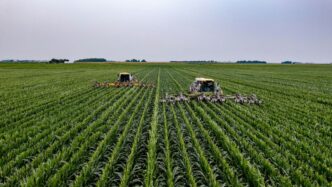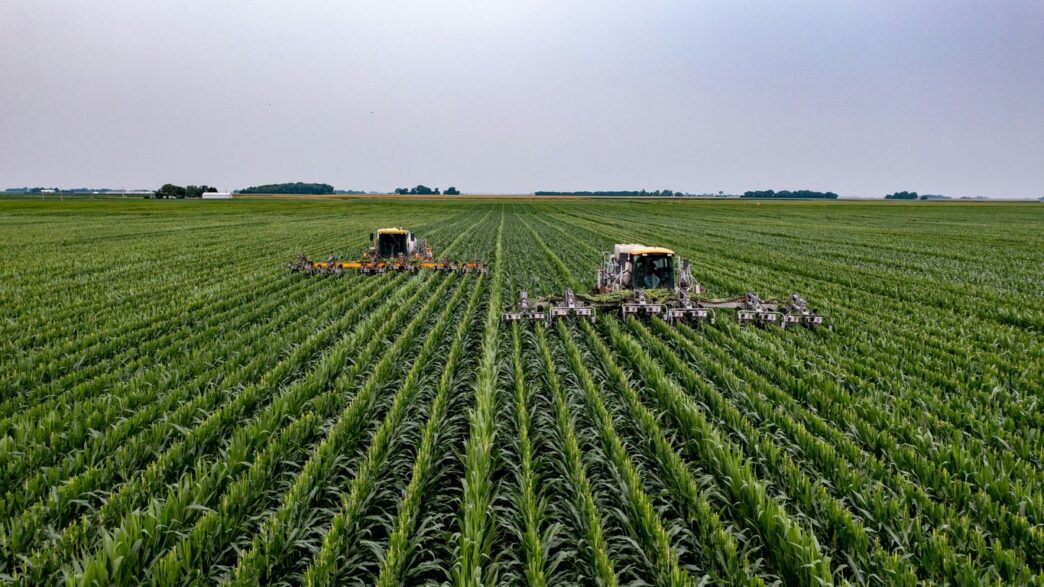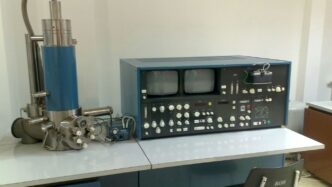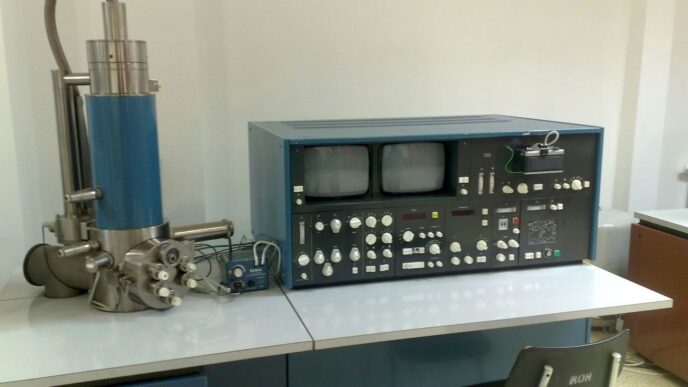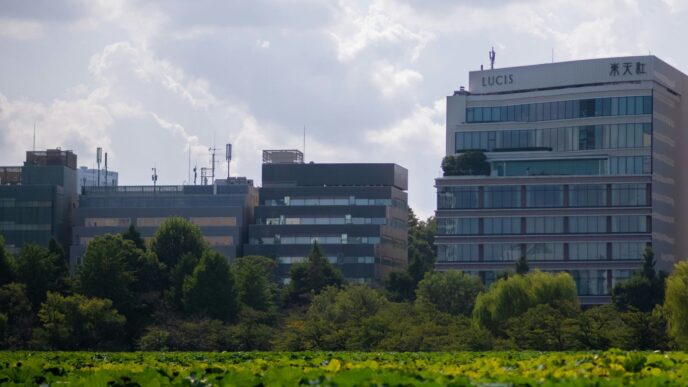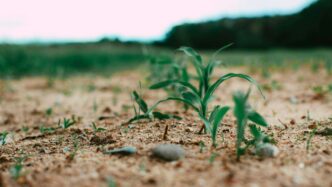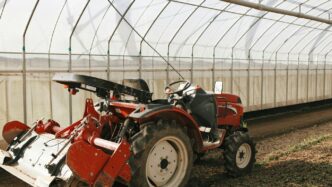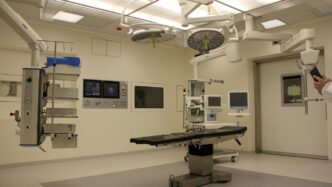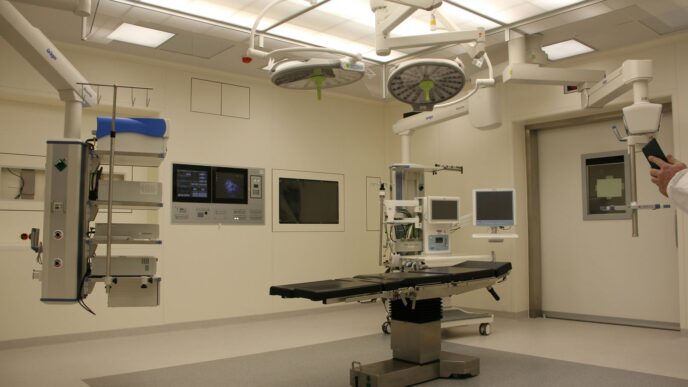Farming is changing, and companies like Bayer are right there, figuring out new ways to grow more food while being kinder to the planet. It’s not just about bigger harvests anymore; it’s about smarter farming, using less stuff, and keeping the environment healthy. Bayer’s work in plant science is a big part of this, looking at everything from the seeds farmers plant to how they protect their crops and manage their land. They’re using technology and new ideas to help farmers deal with things like weird weather and make sure we have enough food for everyone, now and in the future. It’s pretty interesting stuff, honestly.
Key Takeaways
- Bayer is developing advanced seeds using gene editing to create crops that can better handle tough conditions like drought and heat.
- Their Climate FieldView™ platform uses data from satellites and sensors to give farmers real-time advice for managing their fields more precisely.
- The company is focusing on biological solutions and integrated pest management to reduce the need for traditional chemical pesticides.
- Bayer supports regenerative agriculture practices aimed at improving soil health, increasing biodiversity, and capturing carbon.
- New technologies like AI-powered robots and drones are being introduced to automate tasks and improve the accuracy of farming operations.
Next-Generation Precision Crop Protection
It feels like just yesterday we were talking about spraying everything just in case. Now, things are getting way smarter. Bayer’s pushing this idea of ‘precision crop protection,’ which basically means using science and data to put the right treatment, in the right place, at the right time. It’s a big shift from the old way of doing things, and honestly, it makes a lot of sense.
Data-Driven Targeted Application
This is where the magic really happens. Instead of a blanket approach, we’re seeing applications that are guided by actual field data. Think sensors in the soil, weather stations, and even drone imagery. All this information gets crunched to figure out exactly where a pest or disease is showing up and how bad it is. This allows for incredibly targeted applications of herbicides, fungicides, and insecticides. It’s like having a doctor for your crops, but on a massive scale. This means less product is used overall, which is good for the wallet and the environment.
Minimizing Ecological Footprints
When you use less product and apply it more precisely, the environmental benefits are pretty clear. We’re talking about reducing chemical runoff into waterways, protecting beneficial insects like pollinators, and generally lessening the impact on the surrounding ecosystem. It’s about working with nature, not just against the problems. This approach helps keep the soil healthier and supports biodiversity in and around the fields.
Advanced Sensor and Weather Analytics
To make all this precision work, you need good tools. Bayer is integrating advanced sensors that can monitor crop health and environmental conditions in real-time. Combine that with sophisticated weather analytics, and you get a much clearer picture of what’s happening and what’s likely to happen next. This helps farmers make better decisions about when to spray, what to spray, and how much to use, all while reducing the risk of drift and off-target effects. It’s a complex system, but the goal is simple: protect the crop effectively while being as gentle as possible on the planet.
Advanced Seed Genetics and Gene Editing Innovations
Seeds are really the starting point for everything on the farm, right? Bayer is putting a lot of brainpower into making seeds better, using some pretty neat science. They’re not just trying to get more bushels per acre, though that’s important. They’re also focused on making crops tougher and more useful, even when the weather gets weird or pests show up.
Accelerated Development of Resilient Crops
Think about it: the climate isn’t exactly predictable these days. Crops need to handle more heat, less water, and sometimes, new kinds of bugs. Bayer is using gene editing tools, kind of like molecular scissors, to speed up how they develop plants that can naturally withstand these challenges. This means we can get crops that are more drought-tolerant or resistant to certain diseases much faster than traditional breeding alone would allow. It’s about building a more stable food supply for the future.
Marker-Assisted Breeding for Yield and Nutrition
This is where things get really precise. Instead of just looking at the plant itself, scientists can now look at its DNA. Using something called marker-assisted selection, they can pinpoint the exact genes that contribute to higher yields or better nutritional value. It’s like having a cheat sheet for breeding. This helps them develop varieties of corn, soybeans, and wheat that are not only more productive but also healthier for us to eat. They can also select for traits that make the plants more efficient with the resources they use.
Supporting Reduced Input Requirements
Farming is getting more expensive, and there’s a big push to use fewer chemicals and fertilizers. Bayer’s work in seed genetics is also aimed at creating plants that naturally need less. This could mean crops that are better at grabbing nutrients from the soil or that are naturally more resistant to pests, cutting down on the need for sprays. It’s a win-win: better for the farmer’s wallet and better for the environment. These seeds are designed to fit right into farming systems that aim to improve soil health and reduce overall environmental impact.
Climate FieldView™: The Digital Farming Platform

Real-Time Insights from Integrated Data
So, imagine you’re out in the field, and you need to know exactly what’s going on with your crops. That’s where Climate FieldView™ really shines. It pulls together all sorts of information – like what the weather’s doing, soil conditions, and even how your seeds are performing – into one easy-to-see place. This platform acts like a central hub, making sense of all the data that modern farming generates. It uses things like satellite images and data from sensors you might have in your fields to give you a clear picture, right now. No more guessing games or waiting around for reports. You get a constant stream of information that helps you understand your fields better than ever before.
Actionable Recommendations for Site-Specific Management
Okay, so you’ve got all this data, but what do you actually do with it? That’s the next big step. Climate FieldView™ doesn’t just show you numbers; it helps you figure out what those numbers mean for your specific fields. It can suggest things like where to apply fertilizer, how much water is needed in a particular spot, or even if a certain area is showing early signs of disease. This means you can treat different parts of your field differently, based on what they actually need. It’s all about being smart with your resources, applying what’s needed, where it’s needed, and not wasting anything. This kind of detailed management can really make a difference in your harvest and your bottom line.
Streamlining Sustainability Compliance and Reporting
Keeping track of everything for sustainability reports can be a real headache. Climate FieldView™ helps simplify this whole process. Because it’s already collecting and organizing data on things like nutrient application and water usage, it can generate reports that show you’re meeting environmental goals. This makes it much easier to prove you’re farming in a way that’s good for the planet. Plus, having this data readily available helps you identify areas where you can improve your sustainability efforts even further. It’s a way to farm more responsibly and have the documentation to back it up, which is becoming more and more important these days.
Sustainable Biologicals and Integrated Pest Management
Harnessing Natural Organisms for Plant Defense
It’s pretty neat how nature already has a lot of the answers for keeping crops healthy. Bayer is really leaning into this by developing products that use natural stuff, like helpful microbes or biofungicides. These aren’t your typical chemical sprays; they work with the plant’s own defenses, making them stronger against diseases and pests. Think of it like giving your plants a natural immune boost. This approach is all about working with nature, not against it, to keep crops thriving.
Reducing Reliance on Conventional Chemicals
We’re seeing a big push to use fewer traditional chemical pesticides and herbicides, and Bayer is right there with solutions. They’re putting together detailed plans for Integrated Pest Management (IPM). This means using a mix of strategies – like encouraging the good bugs that eat the bad ones, planting different crops at different times, or using specific biological treatments only where and when they’re needed. The goal is to significantly cut down on chemical use, by as much as 45% in some cases, while still keeping pests in check. This is great for the environment and also helps farmers deal with pest resistance, which is a growing problem.
Promoting Ecosystem Balance and Biodiversity
When we rely less on broad-spectrum chemicals, the whole farm ecosystem starts to look a lot healthier. IPM and biologicals help protect beneficial insects, like pollinators, and other wildlife. Bayer’s approach encourages practices that support a balanced environment. This includes things like:
- Using trap crops to lure pests away from the main crop.
- Introducing natural predators or parasites of common pests.
- Rotating crops to disrupt pest life cycles.
By doing this, farms can become more resilient and support a wider variety of life, which is good for the long-term health of the land and for meeting new environmental standards.
Regenerative Agriculture Programs for Soil Health
Bayer is really putting a lot of focus on regenerative agriculture these days. It’s all about making farms healthier for the long haul, not just for this season’s harvest. Think of it as giving the land a good, long-term tune-up. They’re pushing practices that help rebuild the soil, boost the variety of life on the farm, and basically make the whole system more resilient. It’s a big shift from just maximizing output year after year.
Practices for Soil Regeneration and Biodiversity
So, what does this actually look like on the ground? It involves things like planting cover crops between main harvests to keep the soil covered and alive. Reduced tillage is another big one – disturbing the soil less helps keep its structure intact and prevents erosion. Multi-cropping and crop rotation are also key, breaking pest cycles and improving nutrient use. These methods are designed to increase the organic matter in the soil, which is like giving it a superfood boost. More organic matter means better water retention and a healthier environment for all sorts of beneficial microbes and insects.
Incentives for Climate-Smart Transitions
Making these changes isn’t always easy for farmers, and Bayer knows that. They’re offering programs to help farmers make the switch to these climate-smart practices. This can include things like financial incentives or providing technical support to figure out the best approach for a specific farm. It’s about making the transition smoother and showing farmers that these practices can pay off, not just environmentally, but economically too. They want to support farmers who are trying to do right by the land.
Addressing Productivity and Climate Mitigation
It might seem like focusing on soil health and biodiversity could take away from how much food you can grow, but that’s not the idea. Regenerative agriculture aims to tackle both issues at once. Healthier soil leads to more robust crops that can better withstand tough weather, like droughts or heavy rains. Plus, by improving soil health and using practices like cover cropping, farms can actually store more carbon from the atmosphere in the soil. So, it’s a win-win: better yields over time and a positive contribution to fighting climate change.
AI-Powered Automation and Remote Sensing
Farming is getting a serious tech upgrade, and AI is leading the charge. We’re talking about machines that can do jobs on their own and sensors that keep an eye on things from way up high. It’s all about making farming more precise and, honestly, a lot less labor-intensive.
Autonomous Machinery for Precision Applications
Imagine tractors that drive themselves, or drones that can spray exactly where they’re needed. That’s what’s happening now. These autonomous machines, along with robotic weeders, are designed to apply fertilizers and crop protection products with incredible accuracy. This means less waste and a more targeted approach to keeping crops healthy. It’s a big step towards reducing the amount of chemicals we need to use overall.
Satellite Imaging for Real-Time Monitoring
Looking down from space, satellites are giving us a bird’s-eye view of our fields like never before. They capture images that show us how healthy our crops are, how much water is in the soil, and even spot potential problems before they become major issues. This constant stream of data helps farmers make smarter decisions, faster. We can map vegetation health, track moisture levels, and get a clear picture of land use, all from orbit.
Enhancing Operational Accuracy and Sustainability
Putting all this technology together – the self-driving machines and the satellite data – really sharpens up how we farm. It helps cut down on the need for manual labor, which is a huge benefit. Plus, by applying inputs only where and when they’re needed, we’re making farming more sustainable. It’s about getting more done with less, and doing it in a way that’s better for the environment. This shift means we can improve how accurately we manage our operations and boost our sustainability efforts significantly.
Farmer Education and Digital Access Initiatives
It’s not enough to just invent new technologies; people need to know how to use them. Bayer really gets this. They’re putting a lot of effort into making sure farmers, especially those in places where farming is just starting to catch up with modern methods, can actually benefit from all these cool new tools. This means more than just handing out pamphlets, though. They’re looking at training, making sure folks can get their hands on the tech, and even helping with access to money to buy things.
Expanding Digital Literacy and Outreach
Think of it like this: you wouldn’t give someone a fancy new smartphone without showing them how to turn it on, right? Bayer is doing something similar for farming. They’re setting up ways for farmers to learn, whether it’s through online courses, virtual farm tours, or even just having demo farms where they can see things in action. This is super important for getting everyone on the same page, especially when it comes to understanding new seed types or how to use those fancy digital platforms. It’s all about building confidence and know-how.
Improving Access to Inputs and Finance
Sometimes, the biggest hurdle for a farmer isn’t knowing what to do, but being able to afford it. Bayer is working on making it easier for farmers to get the things they need, like better seeds or the right crop protection products. They’re also looking at financial tools that can help farmers manage their money better, so they can invest in these new practices without going broke. This focus on accessibility is key to making sure that innovation doesn’t just benefit the big farms, but smallholders too.
Facilitating Knowledge Transfer on Best Practices
Once farmers have the tools and the knowledge, they need to know how to put it all together. Bayer is helping to share information about the best ways to farm, from using their new seeds to applying crop protection products in a way that’s good for the environment. This includes:
- Guidance on using digital tools like Climate FieldView™ for better decision-making.
- Information on integrating biological solutions with traditional methods.
- Tips for improving soil health and adopting regenerative practices.
It’s all about making sure that the innovations Bayer is developing actually lead to better, more sustainable farming for everyone involved.
Bayer Crop Science and the Path Forward for Farming
So, looking at everything Bayer Crop Science is doing, it’s pretty clear they’re really pushing hard on new ideas for farming. They’re not just sticking to the old ways; they’re bringing in smart tech, better seeds, and ways to farm that are kinder to the planet. It seems like they’re trying to help farmers grow more food, deal with tough weather, and use resources better. It’s a big job, but their focus on things like digital tools and sustainable practices shows they’re serious about making farming work for the long haul, for both people and the environment.
Frequently Asked Questions
What kind of new technologies is Bayer using to help crops grow better?
Bayer is using really smart ways to help crops, like making them tougher against dry weather or bugs. They also use special tools to figure out exactly what a plant needs, like water or food, and give it only that. This helps crops grow strong without wasting anything.
How does Bayer use computers and data to help farmers?
Bayer has a digital program that collects information from fields using things like satellites and sensors. This helps farmers know what’s happening with their crops in real-time. It gives them advice on how to best take care of each part of their field, making sure they use resources wisely.
What are ‘biologicals’ in farming, and why are they important?
Biologicals are like natural helpers for plants, such as good bugs or tiny microbes that protect the plant from harm. Using these means farmers don’t have to use as many chemical sprays. It’s a gentler way to keep crops healthy and good for the environment.
What does Bayer do to help improve the soil?
Bayer supports methods that make soil healthier, like planting different crops together or not digging up the soil too much. These practices help the soil become richer, hold more water, and support more types of plants and animals. This makes farms more resilient.
How is Bayer using robots and smart machines in farming?
Bayer is using robots and self-driving machines that can do tasks like spraying or planting very precisely. They also use things like drones and satellite pictures to keep an eye on crops from above. This makes farming more accurate and helps save time and effort.
Why is it important for farmers to learn about new farming methods?
Learning new ways to farm helps farmers grow more food and protect the environment. Bayer offers training and makes it easier for farmers, especially those in poorer areas, to get the tools and information they need to use these new, helpful farming techniques.

